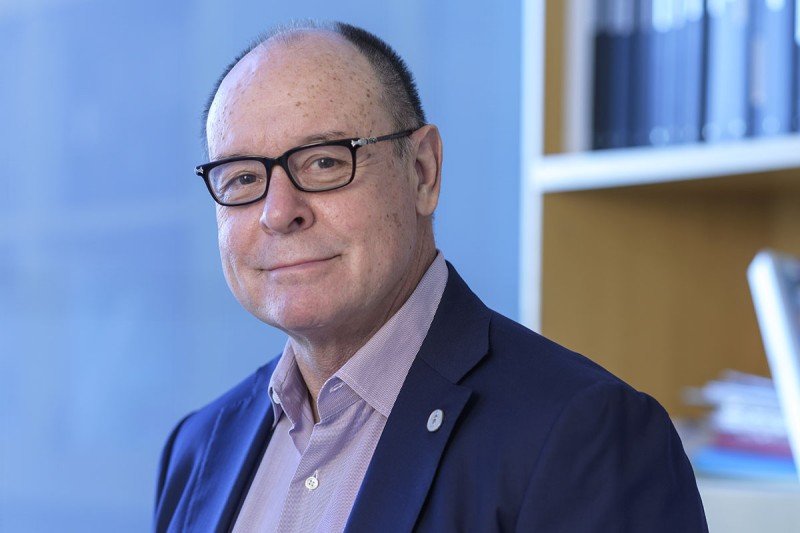
Glioblastoma brain tumors are one of the most deadly forms of cancer, with a five-year survival rate of less than 10% for patients 45 and older. Even when the tumors look as if they have been fully removed, they almost always come back. Investigators who are part of Memorial Sloan Kettering Cancer Center’s Brain Tumor Center (BTC) are focusing their efforts on these cancers, with the goal of developing better treatments.
In a new study published January 10, 2022, in Developmental Cell, MSK scientists looked at a subset of cells found within glioblastomas that resist treatment. The researchers hope that learning more about these cells will lead to new drugs that target them based on their biology.
“The standard therapy for glioblastoma targets actively dividing cells,” says BTC Director Luis Parada, the paper’s senior author, who came to MSK in 2015 to develop a comprehensive program for fighting brain tumors. “But here, we demonstrate the existence of a small percentage of dormant, stem-like cells that evade these therapies and reinitiate tumor development. The future evaluation of therapies will be better served by taking into account the response and status of these cancer stem cells.”
How Tumor Cells Hide from Treatment
Many features come together to make glioblastomas especially challenging to treat. Their location in the brain, often near structures that are critical for thinking or movement, can make them difficult to fully remove with surgery. Additionally, the protective filtering mechanism called the blood-brain barrier often prevents chemotherapy and other drugs from reaching these tumors.
Finally, these tumors are extremely heterogeneous. That means that within them, there are many different kinds of cells. Not all of them respond to treatment in the same way. Even when most of a tumor is destroyed with medications or radiation therapy, some cells can survive and enable the tumor to come back. Dr. Parada and his team are focused on these uncooperative cells in their latest work.
Traditional chemotherapy and radiation therapy go after cells that are quickly growing and dividing — a characteristic of most cancer cells. But in glioblastoma tumors, some cells are quiescent. That means they are essentially in a dormant, resting state — hiding out from treatments aimed at cell division. Previous research from Dr. Parada’s lab examined the role of quiescent cells in a rare type of pediatric sarcoma called malignant peripheral nerve sheath tumors. Scientists determined that these cells were a type of cancer stem cell that have the ability to re-create tumors.
“We found that quiescent cells very gradually give rise to dividing cells, which allow tumors to grow again,” explains Dr. Parada, who is a member of the Cancer Biology and Genetics Program in the Sloan Kettering Institute. In their Developmental Cell paper, he and his colleagues tested the hypothesis that quiescent cancer stem cells play a similar role in glioblastoma.
Looking for Cells with Unique Gene Signatures
Using genetic reporters in mouse models, they examined what was different about these quiescent cancer stem cells. They found that the cells had a unique pattern of gene expression. Then they isolated these cells, confirmed their resistance to chemotherapy, and used the “transcriptional signature” unique to cancer stem cells to identify and isolate related cells from human tumors.
Dr. Parada’s team also demonstrated how the cells are able to leave their quiescent state and begin dividing again. The new tumors created from these cells had the same functional properties as the original tumors.
“This research shows why therapies that focus only on cell division are insufficient for treating glioblastoma and reinforce the need for developing new strategies that target quiescent cells,” Dr. Parada says. “The discovery of activated cancer stem cells in mouse models provides us with unprecedented opportunity to investigate their unique features and self-renewal mechanisms, which will help in our ongoing efforts to find a cure for glioblastoma.”
An Array of Brain Tumor Models
This research was possible thanks to patient-derived xenograft (PDX) models, a laboratory model in which cells from a human tumor are transplanted into a research animal, such as a mouse. The human cells grow into a new tumor in the animal and can then be studied on the microscopic level and used to test potential drugs. The tumors used to create the models are collected from MSK patients who volunteer to donate their tissue for research after it’s been removed during surgery.
The PDX models are developed using rigorous laboratory techniques. MSK’s experts conduct a number of tests to validate the models’ similarity to the original tumor. The BTC currently has more than 100 PDX models that can be used for research. “We want to acknowledge support from the Brain Tumor Center Zuckerman Foundation Initiative and the Rory and Howard Meyers Family,” Dr. Parada says.
“The BTC is a cross-institutional, multidisciplinary center with an overarching goal of facilitating brain tumor research across MSK,” he adds. “There is a high degree of excitement that our research and our PDX models will be a great resource for other academic researchers, as well as for pharmaceutical companies that want to develop new drugs.”
- MSK researchers looked at why glioblastoma brain tumors usually come back after treatment.
- Their findings suggest that a subset of cells — cancer stem cells — are able to evade current treatments because they are not actively dividing, and that these cells can later form new tumors.
- This research was possible thanks to mouse models that used tumors collected from MSK patients.
- Investigators plan to use these models to test new therapies.




